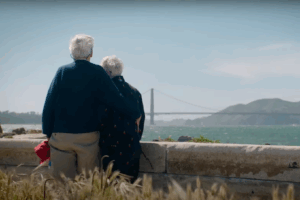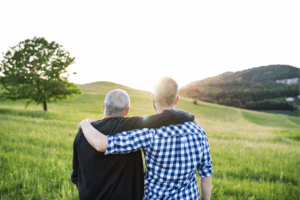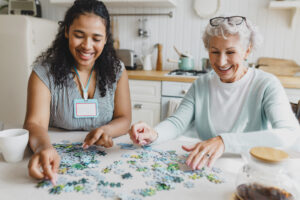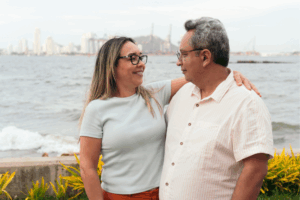Our incredible bodies are regenerating every day, down to the minute cellular level, always hard at work maintaining its very complex system. In fact, your taste buds may be only a couple weeks old and, if your cornea is damaged, the eye can rebuild this layer in a day or less. But as our bodies age, their ability to regenerate slows, becoming more sensitive to conditions that might hinder its hard and necessary work.
Osteoporosis, as an example, points to the body’s limited capacity for maintaining bone health and density, and has gained wider awareness in recent decades. When an aging loved one has weakened bone tissue and takes a fall, their body may take longer than normal to heal. Until the disease gained attention in the medical community, basic research was scarce and methods for diagnosis and treatment were even harder to come by. Aging adults experiencing the pain and instability of osteoporosis before care was prevalent likely felt alone in their experiences, helpless to effect positive change for their own health and wellness.
Sarcopenia, a little-known disease that runs a parallel course to Osteoporosis in our aging muscles, points to the deterioration of muscle mass, strength, or function and is still in the process of gaining acceptance and understanding. Our aging loved are already faced with challenges as their roles shift in society and in the family; a condition like sarcopenia that can significantly limit their physical abilities and independence further can lead to much greater need for assistance in daily life, difficulty trusting their own bodies and a greater risk of falling, emotional turmoil, and depression.
The progression of sarcopenia can continue silently for quite some time before a fall or other traumatic event alerts us to the dangerous challenges working against our body’s precious architecture. For this, and many other reasons, sarcopenia is widely undiagnosed, but we’re at a turning point where the expansion of our awareness can mean hope not just for the proactive treatment of sarcopenia, but also for a more inspired relationship with our bodies as they evolve into our golden, enlightened years.
Greater Awareness Offers Possibilities for Empowered Care
In our resilient musculoskeletal systems, the health of our muscles and bones go hand in hand. The continuous stress that muscles put on our bones with everyday normal movement actually stimulates bone regeneration and strength, and vice versa. Considering this remarkable example of our body’s thriving interconnectedness, it’s a bit surprising that sarcopenia still hangs in the space between mystery and an awakened commitment to treatment and care.
Even with more dedicated attention in recent years (the medical community reached a consensus about a definition for sarcopenia as recently as 2009), it can still be difficult to identify clear causes of the disorder, putting diagnosis, early intervention, and prevention just out of arm’s reach. So, many of our aging loved ones are living with this condition, unaware that there might be real ways of improving the health of their muscles and their quality of life. They may feel alone in their experiences without a direct acknowledgment and explanation for their struggles.
Another obstacle to awareness and diagnosis is that sarcopenia tends to develop fairly slowly at first (5–13% of people 60–70 years old are known to have the disorder), progressing much more rapidly in later years (11–50% of people in their 80s may experience it). So, it’s common for people to live with this deteriorating condition for a long time without knowing it until it’s progressed significantly.
This oversight is compounded by the fact that we tend to take certain signs of aging for granted, dismissing them as unavoidable consequences of the years passing. This kind of attitude toward aging inspires feelings of helplessness and defeat, rather than feelings of hope and empowerment to continue to grow through new challenges and embrace our choices about how we want to live.
Sarcopenia Is an Opportunity to Tune into Our Bodies
It’s never too late to intervene in the course of sarcopenia. It’s evolution as a recognized disorder should not just come with greater medical research and development, but with a greater sense of connection to the natural processes of aging and the many ways that we can lovingly support our bodies as they continue to care for us late in life.
What we do know about the causes of sarcopenia can inform our lifestyle changes, in order to support the body’s ability to renew and sustain healthy muscle mass. It’s believed that the primary contributor to sarcopenia onset is inactivity. When we exercise our muscles, even just through our daily activities, it stimulates the release of hormones and other compounds that support protein synthesis and muscle tissue growth.
Prolonged inactivity can lead to connective and fat tissues actually infiltrating the spaces that used to be muscle. It makes sense, too, that without the required nutrients, exercise alone can’t support protein synthesis and muscle renewal. Aging adults tend to experience changes in their appetite and in their ability to digest and absorb nutrients, so their bodies struggle to keep up with their regenerative needs. But it is possible to embrace these new challenges as opportunities to understand what kind of love and attention our aging bodies need and want.
Healthy Habits Replenish Our Bodies’ Resources
The positive side to this forward-looking discussion is that we have every reason to incorporate the healthy habits that could keep sarcopenia at bay—all of us—because they are habits that can be powerfully helpful for anyone’s health. As with all lifestyle changes, it’s important to be compassionate with your body and your limitations, but here are two guidelines that can be particularly helpful to combat the effects of sarcopenia:
- Resistance exercises: These are highly recommended because they stimulate healthy processes in the musculoskeletal system overall, including protein synthesis, cell regeneration, and hormone production. This kind of strength training acts on the effects of osteoporosis too. Resistance training involves weights, resistance bands, or machines, and it’s best for older adults to approach these movements with less weight and more repetitions. Aerobic exercise is also a positive practice, especially in addition to strength training with resistance. The improvements in strength and balance that come with a personalized exercise routine can also help to prevent falls, which are that much more dangerous for older adults with sarcopenia and osteoporosis.
- A diet rich in protein: Support healthy muscle maintenance through nutrition in older adults. One amino acid in particular, leucine, aids in protein synthesis, helping to convert food and exercise into muscle growth. Foods containing leucine include dairy, meat, and nuts like milk, eggs, cheese, soybeans, beef, and peanuts. Of course, a diet that is well balanced with fruits, vegetables, whole grains, and adequate hydration is going to support the body’s overall health and its vitamin and mineral needs for renewed physical activity and vibrancy.
Inactivity and an incomplete diet aren’t the only causes of sarcopenia. Hormone imbalances, inflammation, and specific vitamin and mineral deficiencies can also contribute to muscle atrophy and decline. In these cases, physicians may recommend supplements and other medications. But the most important medicine will be to embrace our physical, mental, and emotional well-being as we navigate these challenges—and to embrace each other, so that we are all expanding our awareness and commitment to care together.
The Trend Towards Self-Love and Self-Care
It’s great to recognize that this discussion of sarcopenia is tipping in that positive direction of widespread understanding and intervention—in the medical community and in our society at large. More and more, we have opportunities to feel empowered about taking a proactive approach to our health.
It’s predicted that as our aging population grows, the number of people worldwide with sarcopenia will go from 50 million in 2014 to 200 million in 2050. Of course, that’s still just a distant prediction. What we do now for our aging loved ones—and for our optimal health at any age—can alter sarcopenia’s course and represent an empowering trend toward self-love and self-care as a society.
If you’re interested in learning more about programs and services designed to help older adults live vibrant, healthy lives, contact Institute on Aging today. We continue to expand our own awareness of the evolving challenges that come later in life, so we can spread that understanding and compassionate action to you and your loved ones.






